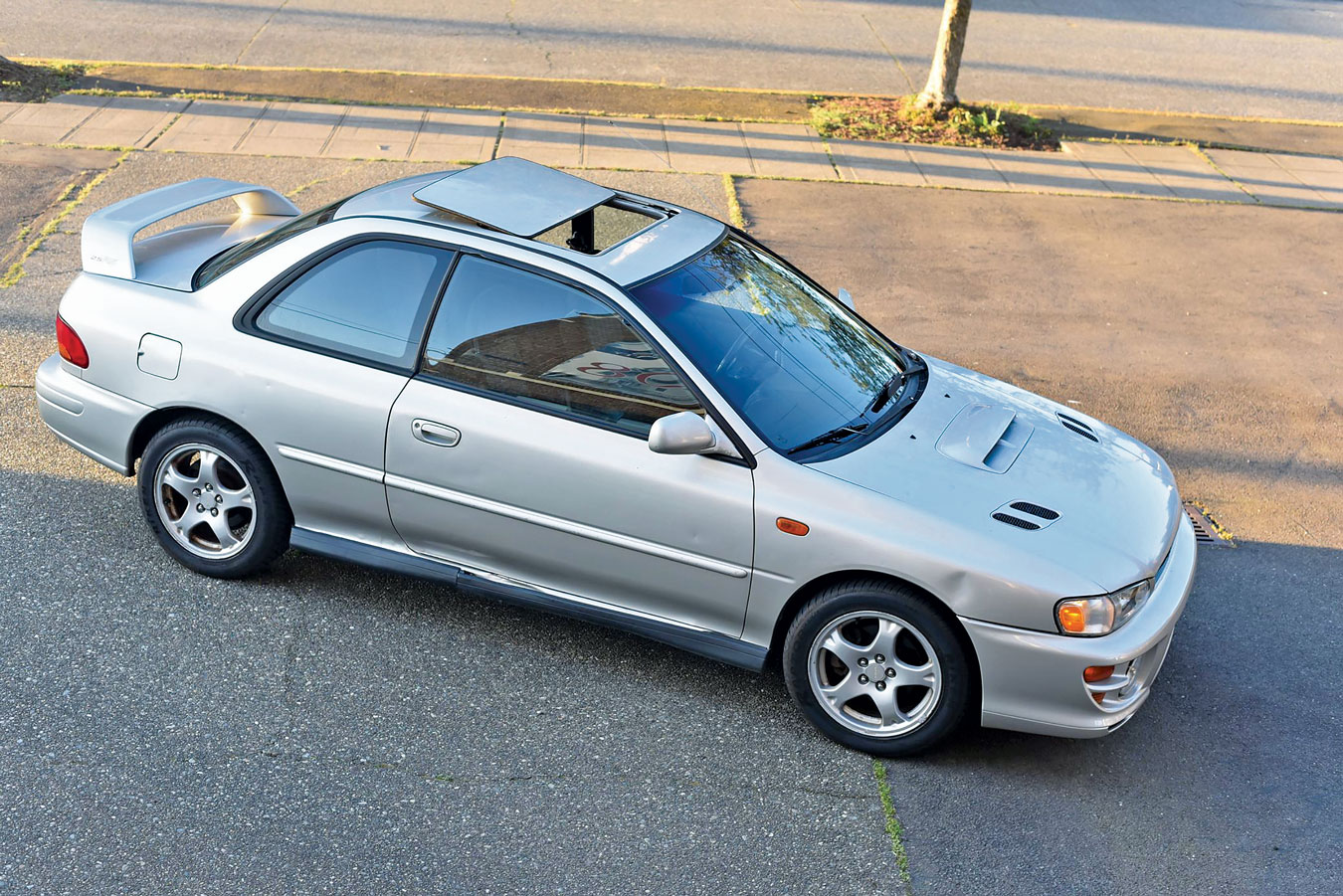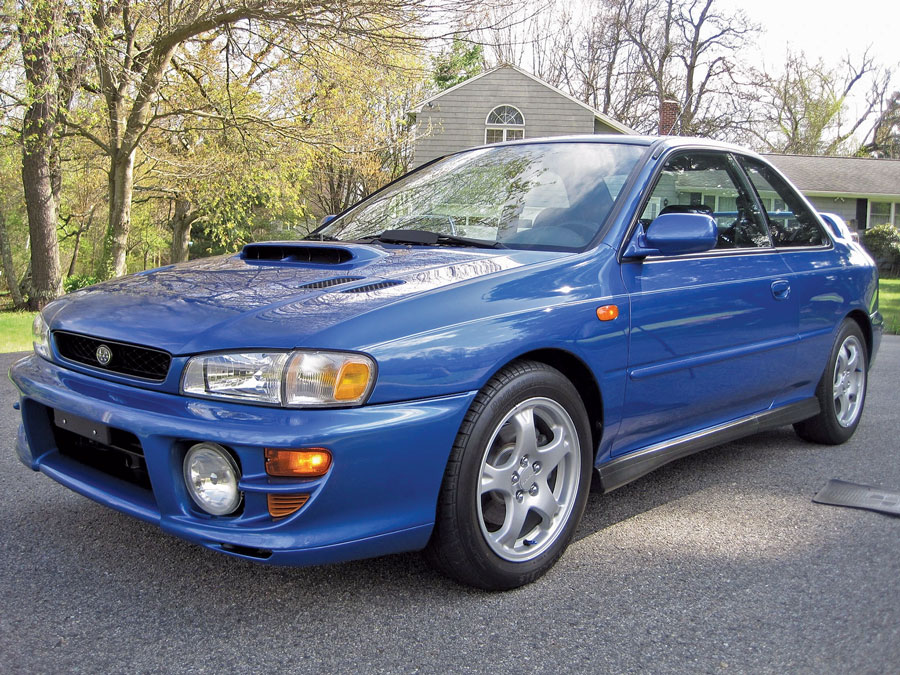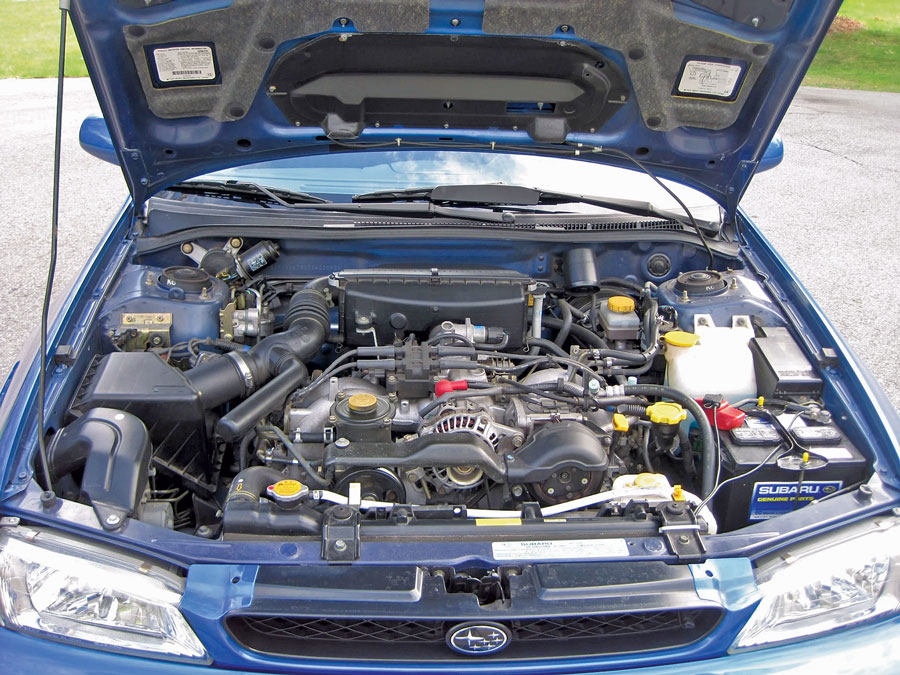
Mention Subaru to most people and they’ll think of an Outback station wagon-cum-crossover. Tighten it up to Subaru sports cars and they will usually think of the WRX and WRX STI hot rods, or the strangely sci-fi SVX of the 1990s. But there was a brief period at the turn of the millennium where the Impreza 2.5RS was Subaru’s leading sport compact. It’s still a significant model with good long-term prospects, so these are still the best years for subaru outback.
Born from rally racing
To understand the 2.5RS in context requires a little cross-Pacific background. Subaru brought out the compact Impreza for the 1993 model year, replacing the boxy Leone. As soon as the Impreza hit the market, it began to replace the Legacy in FIA Group A rally competition. Prodrive built an Impreza that took second place on its maiden rally and later won the Acropolis Rally with one in 1994. For the American market, Subaru offered 1.8-liter and 2.2-liter naturally aspirated engines, but FIA rules allowed a 2.0-liter turbocharged engine, which led to the Japanese-market Impreza World Rally eXperimental (WRX).
To get a little of that rally juice flowing in the U.S., in 1998 Subaru created a new, more-powerful 2.5-liter naturally aspirated engine, and then gave the 2-door Impreza coupe some of the WRX’s sporty bodywork, including a hood scoop and vents (functional on the turbocharged Japanese cars, but strictly for show on the 2.5RS). The new halo model also came with anti-lock disc brakes, alloy wheels, big fog lights, uprated interior, air conditioning, cruise control, and a nifty “basket handle” spoiler on the trunk lid.
In 2000, Subaru extended the 2.5RS trim to the 4-door Impreza, with a less-garish spoiler. Both the coupe and sedan could be equipped with either a 5-speed manual gearbox or 4-speed automatic. Of course, Subaru’s signature all-wheel-drive system was standard. Insider secret: The manual transmission’s center differential is open, while the automatic uses Subaru’s Variable Torque Distribution system, making the two-pedal Impreza better in winter weather. That’s important because these cars were made before Subaru offered traction and stability control. Even with AWD, these cars require a deft touch on frozen roads.

Phase 1 and Phase 2
If you start researching 2.5RS models in any depth, you’ll see references to the Phase 1 and Phase 2 engines. When it first came out, the EJ25 boxer engine in the 1998 2.5RS was a dual-overhead-cam design that featured crankshaft thrust bearings in the middle of the engine. The early 2.5-liter engine proved problematic, so the engineers redesigned it immediately to address the issues. Among other things, the thrust washers moved to the bearing journal closest to the flywheel and the twin-cam head was swapped for a new SOHC cylinder head. The new engine was called Phase 2 and, generally speaking, this is the engine you want. It’s pretty rare to find a Phase 1 engine still in use, and even then, it was only on the 1998 models.
The other thing you’ll learn about the EJ25 is that it’s famous for head-gasket issues. The large-displacement design meant that the cylinder and outer crankcase walls are thinner than on the 2.2-liter, with much larger coolant passages. This leads to head gaskets weeping and failing, usually after about 100,000 miles. So, with any 2.5RS, the first question to ask is, “Have the head gaskets been done?” Usually the answer is yes, along with the timing belt and water pump, because you might as well freshen all of those at the same time.
Why not just get a WRX?
The 2.5RS was made through the 2001 model year and got some improvements every year. Later models have a viscous limited-slip rear differential, for example, and attractive white-face gauges. But in 2002 Subaru brought the second-generation WRX to America as a 4-door sedan built on a new chassis. Oddly, the WRX wagon (really more of a hatchback) stayed with the older Impreza bodywork through 2006, but the 2.5RS was never offered in that body style. The 2.5RS badge also continued with the new body style and the same naturally aspirated engine, but those never received much love from Subaru enthusiasts.
On paper, the WRX has several advantages over the original 2.5RS. With 165 horsepower, the 2.5RS was a reasonable contender in its day, but the WRX started with 227 turbocharged ponies, and it was comparatively easy to turn up the wick even further with a reflash or a few well-considered aftermarket parts. If power and speed are your goals, the WRX is a better choice. However, the 2001 2.5RS is 265 pounds lighter than a comparable 2002 WRX, and generally considered more nimble and more attractive.

Buying a 2.5RS
The primary challenge in finding a quality 2.5RS is that slipping a later turbocharged engine, transmission, differentials and axles into an earlier body is quite straightforward. Consequently, many of the 14,191 examples of the 2.5RS brought to America have been stuffed with later WRX and STI drivelines. Finding a clean, unmolested example can be a long process. To wit: Of the 12 most recent 2.5RS sales on Bring a Trailer, just two carried their original engines.
Stock examples trade around $10,000, or even lower for high-mileage examples, as the 2.5RS is still in pre-collectible status. This means that boy racers are bidding up the prices on modified cars from $20,000 to $30,000, and more. Patience is important, but finding the best example you can afford is the key to success. ♦